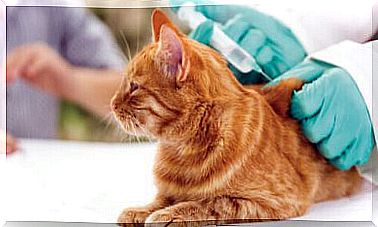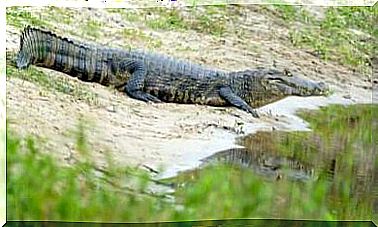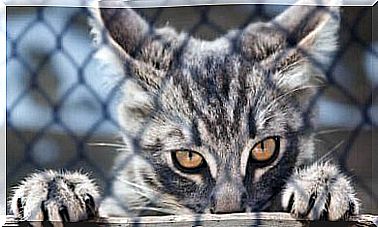The Most Frequent Diseases In Race Horses

There are a number of factors that make racehorses more likely to be affected by musculoskeletal diseases. These are usually specialized, fast-growing breeds with a genetic tendency to suffer from these diseases. Prolonged effort can also help promote its onset.
As graceful and resilient as they may seem, horses can get sick very quickly if you don’t follow a few tips. For this reason, in the following lines we present the most common pathologies in racehorses and how it is possible to prevent them.
Diseases of racehorses: hoof injuries
The hoof is perhaps the most important part of the anatomy of any running animal. Racehorse hooves are vulnerable to disease due to:
- Erosion by the sand tracks.
- Shoe changes.
- Constant baths.
- Long stays in small boxes.
Any disease affecting the hooves is bound to stop training, be it wounds, abscesses, bruises, etc. The approach to the disease can present complications, since doping control makes it impossible to administer drugs systemically, including anti-inflammatories.
Bone and joint injuries: diseases of racehorses
In the following lines we will talk about the bone and joint injuries that most frequently affect these animals.
Fractures of the first phalanx
Longitudinal fractures are the most common. They generally appear suddenly, after the conclusion of an excessively intense workout, or after a run. It often happens that from this point onwards they are destined to worsen, which can even compromise the joints of the phalanx.
More complex are comminuted fractures (in two or more fragments). It is possible to treat them by surgery or immobilization, but the sporting life of the animal must be considered over.
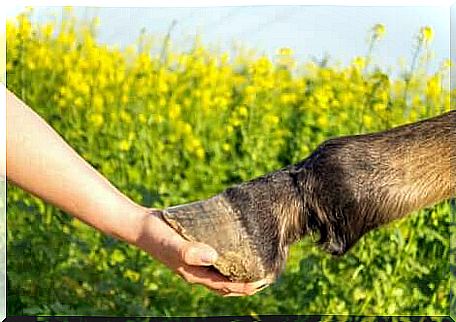
Sesamoiditis
As the name indicates, it is inflammation of the sesamoid bones, auxiliary bones that help support the fetlock. It is quite common in racehorses, also in this case due to an excessive effort to which the extremities are subjected.
This is a problem that, despite rest, tends to reappear once workouts are resumed. For this reason, it is necessary to look for the underlying cause, such as, for example, a defect in posture.
One of the complications caused by sesamoiditis is the fracture of these bones due to excessive traction. If both bones are affected, there will be a complete loss of support for the fetlock.
Dorsal metacarpal pathology
A variety of lesions affecting the metacarpal bones, which are typical of the young racehorse, are incorporated under this name. These injuries result from continued exercise, which incessantly inflames the bone and periosteum.
The result will be the microfractures of the bone, the hemorrhages and, finally, the formation of the callus. Being able to recover an extremity in these conditions is very difficult.
Tendonitis in the racehorse
This is inflammation of the tendons, in this case of the digital and deep flexor. Typically, the cause is due to excessive strain or their stretching due to mechanical tension.
The first symptom is inflammation in the area, known as “arching tendons”. Since it does not always cause lameness, sometimes its presence goes unnoticed by the person caring for the animal.
This poses a problem, as the horse will continue to train and the injury will worsen, possibly causing fibrosis. A fibrotic tendon will not possess the same elasticity as a healthy one and will limit the athletic ability of the horse.
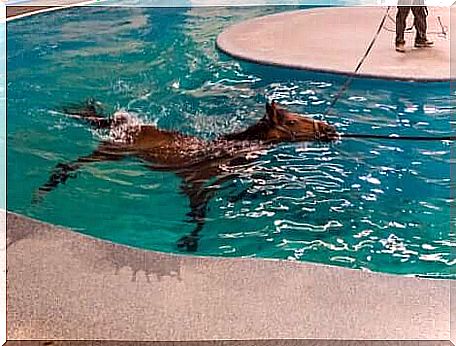
Osteochondritis dissecans
It is a disease that affects the development of joint cartilage, which is relatively common in horses. This cartilage exhibits weaker than normal growth and, with intense exercise, shatters. The resulting fragments can remain partially bonded to the bone or be loose, floating around the joint.
Osteoarthritis or degenerative joint disease
It occurs very often in racehorses. It affects joints with greater mobility, such as the carpus and the fetlock, more frequently.
The excessive effort made by the joints favors the degeneration of the articular cartilage and the synovial membrane. This phenomenon triggers a vicious circle of trauma and inflammation, which lead to permanent joint damage.
The most common muscle disease in racehorses: rhabdomyolysis
The origin of rhabdomyolysis is unknown. Nonetheless, there is a factor common to many cases: several days of rest, in which a diet rich in wheat is followed, vigorous training follows. Symptoms produced by this disease include:
- Pain and reticence to movement.
- Excessive sweating.
- Increased heart rate.
- Hardening of muscle mass.
- Dark-colored urine (myoglobinuria).
A large variety of treatments are available, most of which are aimed at correcting poor muscle condition. This is the case with vitamins B1 and E, selenium, anti-inflammatories or muscle relaxants.

